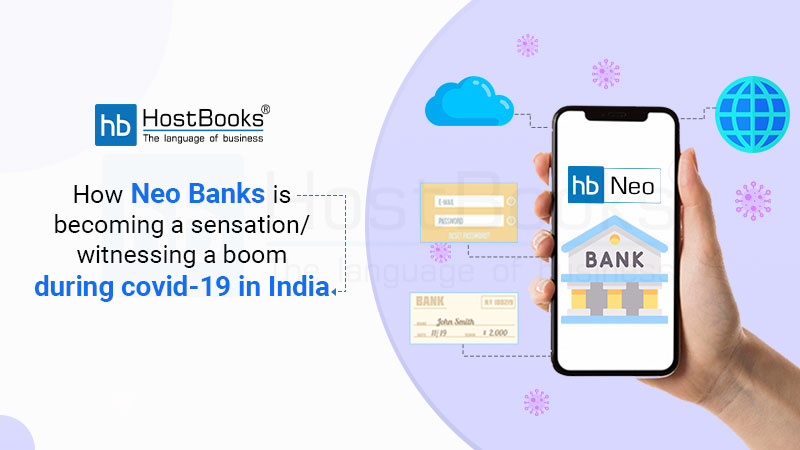How Neo Banks is becoming a sensation/witnessing a boom during covid-19 in India

Neo Banking is a disruptive innovation in the banking sector. Thanks to advanced information and communications technology which gives birth to a completely digital bank that operates digitally without any physical presence. Now, people no longer need to visit their nearest bank branch and spend hours in the queue in order to transact their banking needs. Instead, they can just turn on their computers or smartphones, log on to their online banking accounts, and manage and control everything they need for their finances. Neo banking literally makes banking so easy that from opening new accounts to integrating multiple bank accounts, managing invoices and receivables to generating e-way bills, auto reconciliation to controlling every transaction, one can leverage its benefits with round clock support while resting on the couch and watching their favorite team playing.
There is no denying that the popularity of neo banking has exponentially grown during the Covid-19 pandemic. Increased reliance on technology and social distancing norms during the pandemic has pushed customers to embrace digital banking instead of conventional banking to fulfill their financial needs. Indeed, the pandemic has brought neo banks to the same level as traditional banks as the services of both have majorly relied on apps or websites during the pandemic. This has pretty much made the people aware of the benefits of digital banking, and it will continue to spur people to move towards neo banking to shape their financial space.
Neo Banking – A Boon for SME, MSE, and Retail Customers
Neo banking is becoming increasingly popular among SME, MSE, and retail customers. Fully digitized account opening, free debit cards, instant payments, e-way bill generation, personal finance advisory, invoice management, GST-compliant invoicing, and accounting integration are some of its key features that are impelling SME, MSE, and retail customers to choose neo banks over traditional banks and use its completely digital services.
In conventional banking, the process of disbursals to vendors and other stakeholders is lengthy and time-consuming. However, Neo-banks offer simplicity and ease in the processes by reducing the manual efforts and providing a single dashboard to manage and control the entire finance. This benefits customers, especially during the pandemic.
Furthermore, it offers services like taxation, budgeting, and accounting to MSMEs at low costs that economically help customers manage their compliance in business.
There are no physical branches of Neo-banks which saves a lot of its resources and hence, the benefits pass to the customers, i.e. neo banks don’t incur any charges on withdrawals or any kind of annual or monthly maintenance. Also, with a simple and User-Friendly Interface and superior technologies, neo-banks provide an enhanced customer experience. The applications and websites are very responsive, unlike the traditional banks.
Unlike the United States or Britain, India’s regulations don’t allow Neo banks to hold customer deposits and manage customer money. Only RBI licensed banks are allowed to hold the customer’s money. So, Neo-banks need to be partnered with an RBI licensed bank in order to offer their financial services. This is indeed an advantage for the customers as they need not worry about the money they deposit in the neo bank as their cash is deposited and managed by the RBI’s licensed banks.
The Future of Neo-Banking in India
Neo-banks are at the forefront to revolutionize the financial industry in India. According to a report published by PR Newswire, there was an 83% increase in digital transactions in India in the year 2019, while 68% of Indian consumers embraced online banking as of September 2020. Also, with the growing popularity of Fintech segments, a significant increase in investments is reported. According to the MEDICI India Fintech report 2020, the total funding raised by Indian neo banks so far totals $139.8 million excluding the $93 million raised by Razorpay alone since 2019 for its neo banking initiative. Branchless banks are taking over not only in India but all over the world and are expected to raise about $400 billion by 2026.
These data show that neo-banks have a great potential to rise in India, however, it is also important to minimize the hindrances related to its regulatory norms, data security, and API integration.

Try HostBooks
SuperApp Today
Create a free account to get access and start
creating something amazing right now!
















